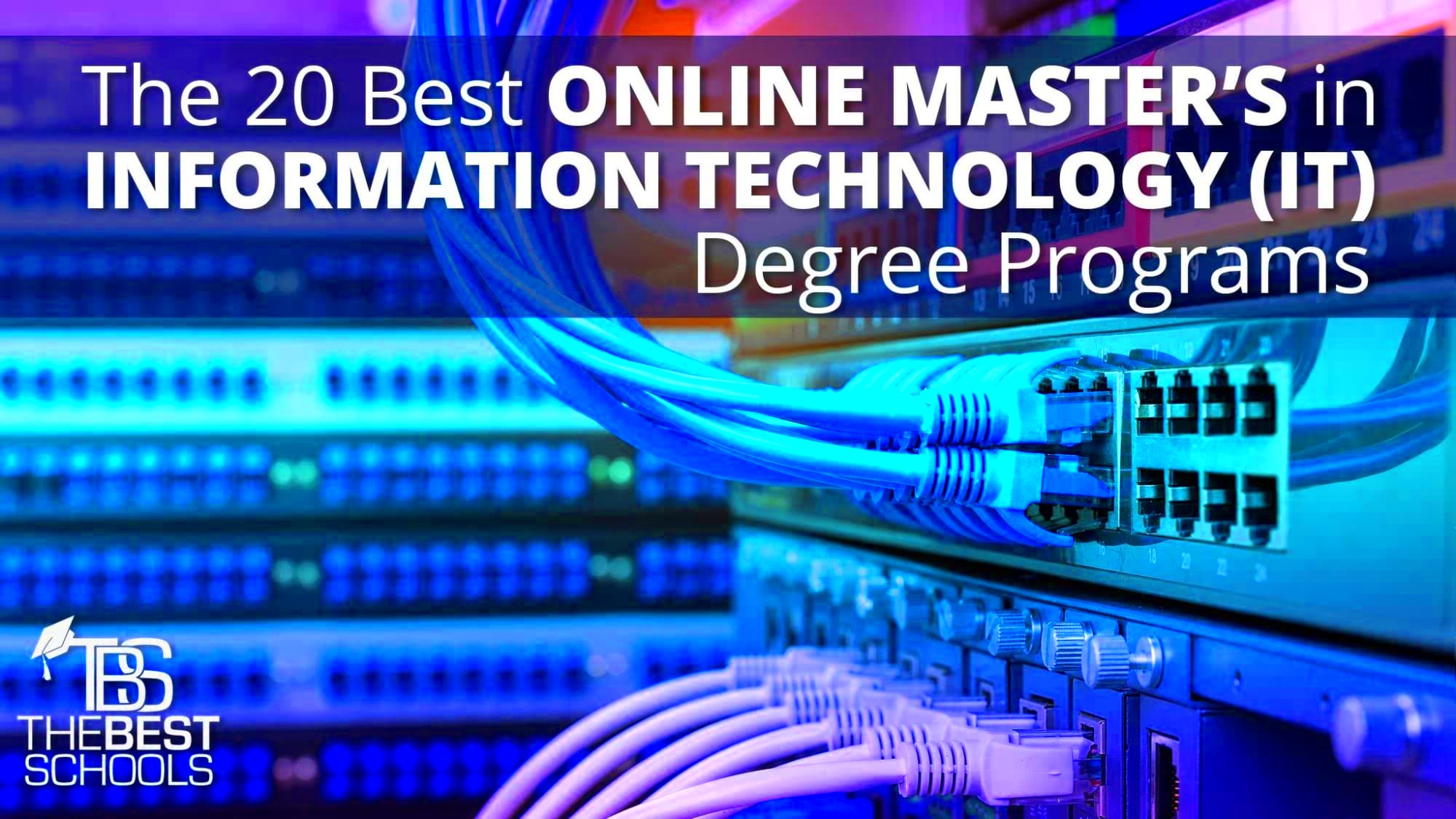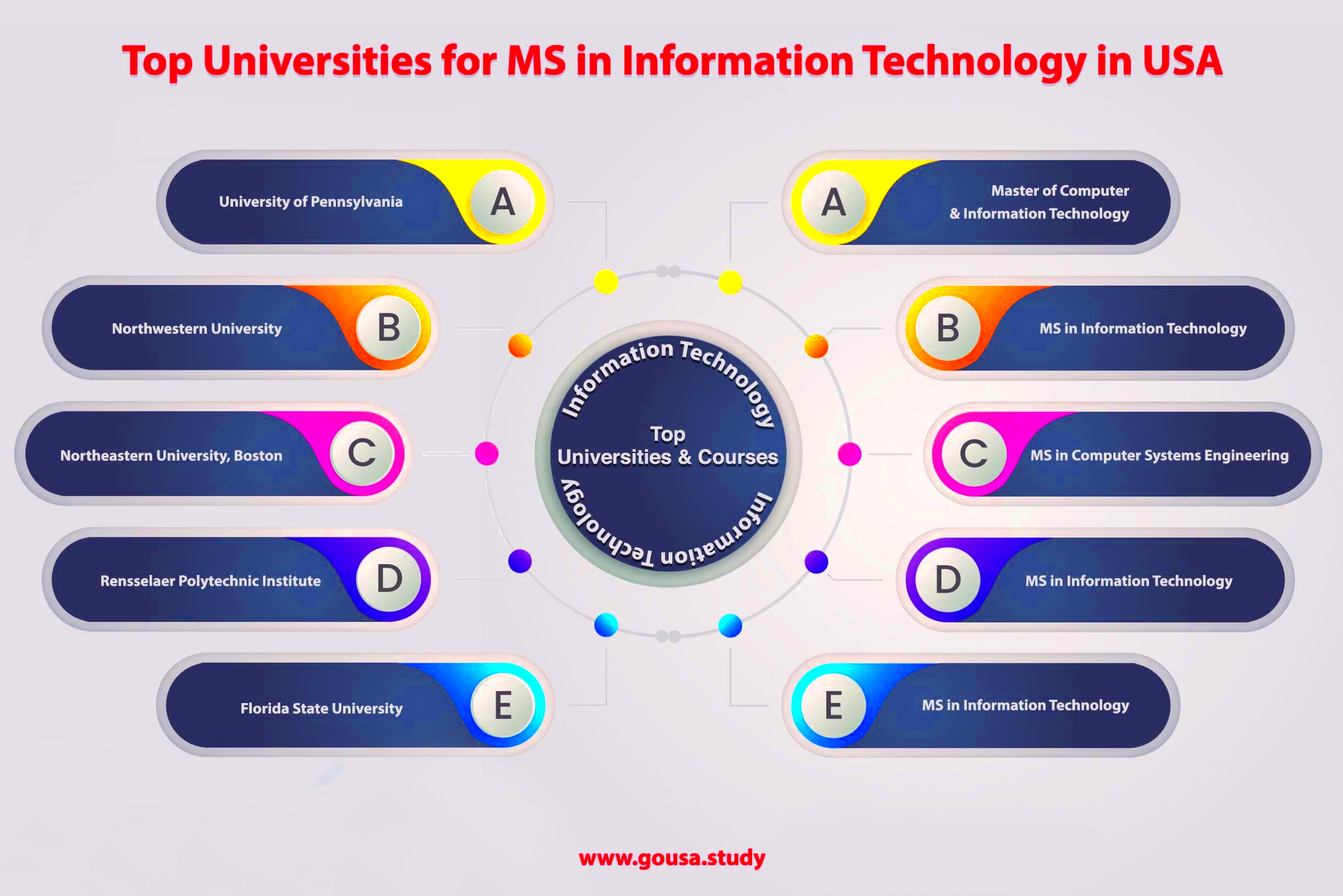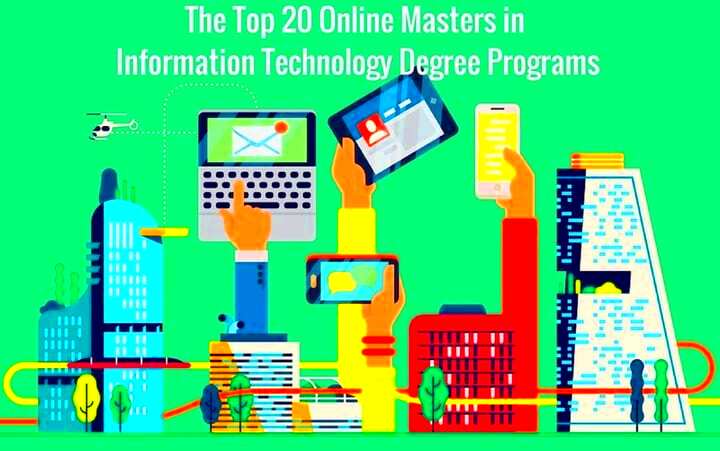In the light of a master’s program in Information
Technology (IT), it is vital to get an idea about them. Programmes such as these offer advanced knowledge and skills for a variety of roles in
technology.Critical areas that are covered in such programs include system analysis, network security, database management and software development. Their objective is to equip students with skills and competencies so that they can take up management positions in the tech industry.Usually, a Master’s degree in IT may take approximately two years in duration depending on whether one is attending fulltime or part time studies. There are many online programs which provide flexibility thereby enabling working professionals combine school and work life more effectively. Additionally, there is also some requirement for a capstone project or thesis that allows students to apply what they have learnt into practice.
Key Factors to Consider When Choosing a Program

Selecting an appropriate Master’s program in information
technology is not an easy task. Here you will find some crucial aspects worth considering:
- Accreditation: Ensure the program is accredited by a recognized body. This guarantees quality education and can affect job prospects.
- Curriculum: Review the courses offered. Look for programs that cover the latest technologies and trends in IT.
- Faculty Experience: Research the instructors' backgrounds. Faculty with industry experience can provide valuable insights.
- Networking Opportunities: Programs that offer industry connections can help you build a professional network.
- Cost: Evaluate tuition fees and available financial aid options. Consider the return on investment.
Taking a moment to evaluate these factors can result in a better decision, making sure you select a course that corresponds with your professional objectives.
Top Universities Offering Master’s in Information Technology

Here is a list comprising some of the major US universities that are distinguished for their outstanding master's programs in Information
Technology:
| University | Program Highlights | Location |
|---|
| Massachusetts Institute of Technology (MIT) | Focus on data analytics and artificial intelligence | Cambridge, MA |
| Stanford University | Strong emphasis on entrepreneurship in tech | Stanford, CA |
| Carnegie Mellon University | Offers interdisciplinary programs with a focus on security | Pittsburgh, PA |
| University of California, Berkeley | Renowned for its research in cloud computing and software engineering | Berkeley, CA |
| University of Texas at Austin | Highly regarded for its tech-focused curriculum | Austin, TX |
In addition to strong programs, these universities also provide students with a variety of resources ranging from research opportunities to internship placements. Therefore, as you explore your options try to investigate the unique offerings and culture of each university to determine what will suit you best.
Exploring Online vs. On-Campus Options
When deciding which master’s program in Information
Technology to take, one significant decision is whether to study online or on-campus. Each option has its own set of pros and cons, and by knowing them you’ll be better placed to decide what is right for you.The internet-based courses grant mobility of course content, enabling you to learn at your own tempo while also accommodating your work and personal obligations. This is especially helpful for working people who might not have time for attending physical lectures. Also, these virtual classes may sometimes be accessed from any location making it possible for one to learn without being confined by any place on earth.On the flip side, having on-campus programs is more like the old school way of learning. Some of the advantages of going to class in person are:
- Networking Opportunities: Meeting professors and classmates face-to-face can help you build relationships that might benefit your career.
- Access to Resources: On-campus students often have direct access to labs, libraries, and other facilities.
- Structured Learning: A set class schedule can keep you accountable and help you stay on track.
In the end, your decision is about you, your learning routine and what fits best into your life. Consider all advantages and disadvantages before making a choice.
Financial Considerations for Graduate Students
Financing your master's degree in Information
Technology is of utmost importance. The expenses of education tend to pile up rapidly hence the need for understanding what to anticipate as well as an establishment of strategies on managing them (costs).Considerations related to finance include:
- Tuition Costs: Tuition can vary widely between institutions. Public universities often offer lower rates for in-state students, while private institutions may have higher fees.
- Financial Aid: Investigate scholarship opportunities, grants, and federal student loans. Many universities offer financial aid packages based on need or merit.
- Additional Expenses: Don't forget about textbooks, technology fees, and other supplies. Create a budget that accounts for these additional costs.
- Return on Investment: Consider the potential salary increase you'll receive after obtaining your degree. Research salary trends for IT professionals to assess whether the investment is worth it.
You may want to prepare early so that you know how much funds will need to be invested into your schooling and therefore make decisions accordingly without stress.
Career Opportunities After Completing a Master’s in IT
Pursuing a master's degree in Information Technology is the key to numerous job opportunities. The industries are continuously searching for proficient IT professionals and this can be achieved through graduation. Some of the possible careers you might want to try include;
| Job Title | Job Description | Average Salary |
|---|
| IT Manager | Oversees IT projects, manages teams, and ensures technology aligns with business goals. | $120,000 |
| Data Analyst | Interprets complex data sets to help organizations make informed decisions. | $85,000 |
| Cybersecurity Analyst | Protects an organization's computer systems and networks from cyber threats. | $100,000 |
| Software Developer | Designs and creates software applications based on user needs. | $110,000 |
| Network Architect | Designs and builds data communication networks, including local area networks (LANs) and wide area networks (WANs). | $130,000 |
What is a Master's in Information Technology?
A Master's in Information
Technology is an advanced degree that provides knowledge and skills in areas such as system analysis, network security, database management, and software development, preparing students for management roles in the tech industry.
How long does it typically take to complete a Master's in IT?
The program usually takes about two years to complete, depending on whether you are studying full-time or part-time. Online programs often offer more flexibility for working professionals.
What factors should I consider when choosing a program?
Consider the program's accreditation, curriculum, faculty experience, networking opportunities, and overall cost, including financial aid options.
What are some top universities for a Master's in IT?
Notable universities include MIT, Stanford University, Carnegie Mellon University, the University of California, Berkeley, and the University of Texas at Austin, each offering strong programs and resources.
Should I choose an online or on-campus program?
Both options have pros and cons. Online programs offer flexibility and mobility, while on-campus programs provide direct access to resources, structured learning, and networking opportunities.
What financial considerations should I keep in mind?
Be aware of tuition costs, potential financial aid, additional expenses (like textbooks and
technology fees), and the return on investment based on potential salary increases.
What career opportunities are available after earning a Master's in IT?
Graduates can pursue various roles, including IT Manager, Data Analyst, Cybersecurity Analyst, Software Developer, and Network Architect, with average salaries ranging from $85,000 to $130,000.
Conclusion
A Master's in Information
Technology equips students with the advanced skills needed for thriving careers in the tech industry. By covering essential areas like system analysis and network security, these programs prepare graduates for various high-demand roles. When choosing a program, consider key factors such as accreditation, curriculum, and financial implications.Additionally, weigh the benefits of online versus on-campus learning to find the best fit for your lifestyle. With careful planning and consideration, pursuing a Master's in IT can lead to rewarding career opportunities and a significant return on investment.
 Selecting an appropriate Master’s program in information technology is not an easy task. Here you will find some crucial aspects worth considering:
Selecting an appropriate Master’s program in information technology is not an easy task. Here you will find some crucial aspects worth considering: Here is a list comprising some of the major US universities that are distinguished for their outstanding master's programs in Information Technology:
Here is a list comprising some of the major US universities that are distinguished for their outstanding master's programs in Information Technology:
 admin
admin








